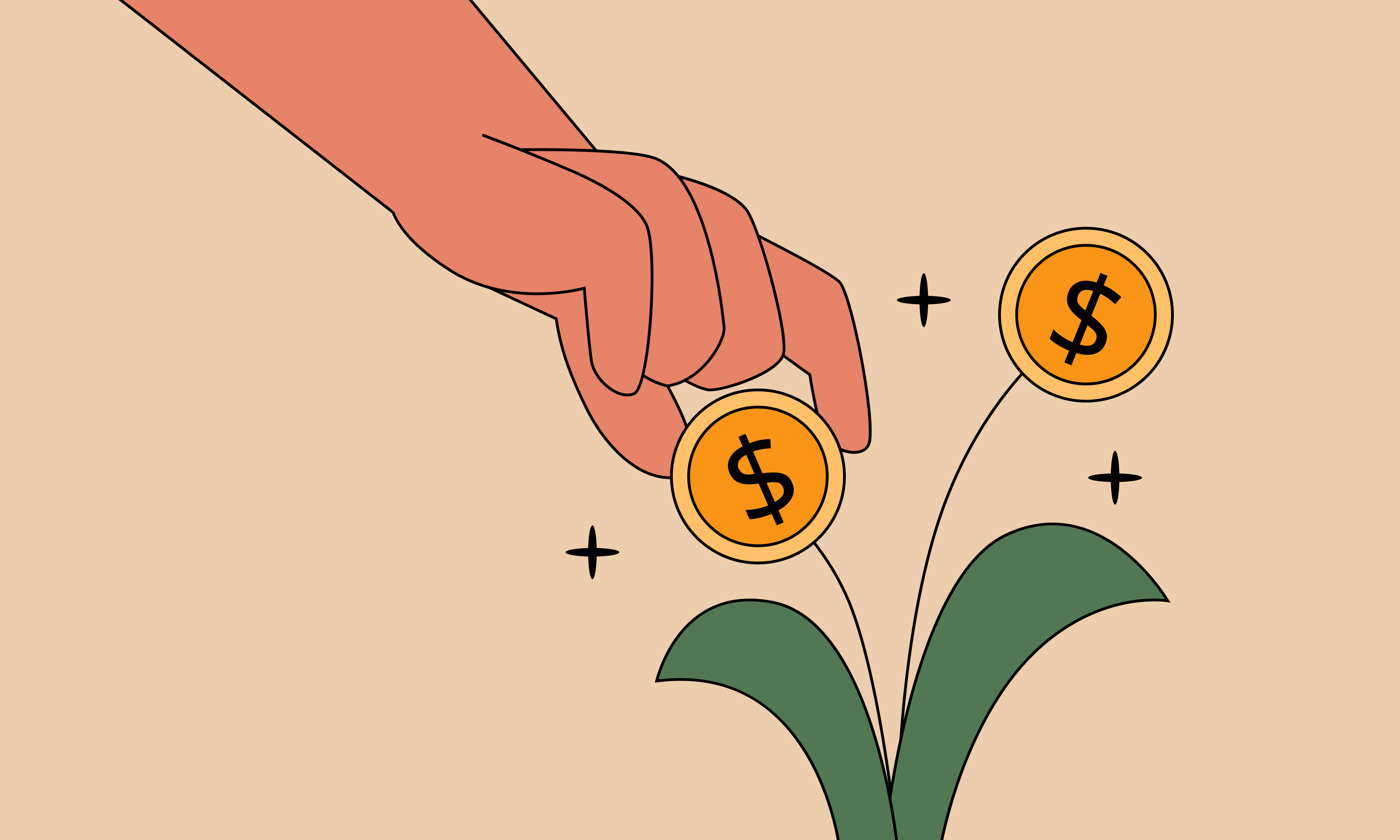what are artist grants? for bright-eyed newbies 🤩 and jaded experts 😒
Grants | Learning | 501c3 | Arts | Fundraising
Whether you’re new to the big wide world of arts funding or an (understandably) jaded expert, it can be hard to understand why grants exist, who funds them, what you can use them for, where to find them, and how to (hopefully) win one. It breaks our hearts when artists come to us feeling confused, lost, or misled when it comes to grant funding. Let this article be a snarky, shining lighthouse in these unnecessarily murky waters.
Visual learner? Watch our Grant 101 video series for a gentle introduction to the arts funding world. The ASL version of the series can be found here.
what are grants?
A grant is a donation (a sum of money, usually) given by one entity (often a public body, a charitable foundation, a private foundation, a specialized grant-making institution, or a business with a corporate social responsibility mission or wing) to another entity (usually a non-profit organization, an individual, a business, or a local government body). Almost always, grants are awarded for a specific purpose linked to public benefit and are accompanied by a legally binding contract. Most importantly, unlike loans, grants are not intended to be paid back.
Here are some examples of grant funds flowing from one entity to another:
| 👛 Funder | 🪜 Recipient | 💡Impact |
| a federal agency like the National Institutes of Health (NIH) | a research and treatment institution like the Memorial Sloan-Kettering Cancer Center | a $4 million research grant for early breast cancer detection in high-risk populations |
| a corporation like The Hershey Company 🍫 | a local nonprofit like Memphis Music Initiative (MMI) | the KIT KAT® Black Music Month initiative |
| a nonprofit like United States Artists | dozens of individual artists every year | artists creating new work and building sustainable practices |
why do they exist?
Grants exist for a few key reasons that aren't always obvious. To be honest, the incentives for having a grant program are rarely discussed in a candid way — which can make it difficult for applicants to understand or address the unspoken motivations of funders! From the funder's perspective, grants offer:
- 💸 Tax benefits - This is a big motivation. Private foundations are actually legally required to distribute at least 5% of their assets annually to maintain their tax-exempt status. Corporations, on the other hand, can deduct charitable contributions up to 10% of their taxable income…so awarding grants is just another way to lower their tax burden.
- ⚡ Impact - Funders can advance causes they care about without building and running their own programs, by outsourcing the implementation to on-the-ground experts.
- 🌳 Legacy - For individuals and families, establishing a foundation that gives grants creates a lasting legacy and public recognition. The Rockefeller, Ford, and Gates foundations are prominent examples.
- ♟️ Influence - Grants allow funders to shape fields, research directions, and public discourse without direct control. Government agencies, for example, use grants to advance their policy priorities.
- 📸 Image - Corporate foundations and family trusts often fund work that improves their public image or addresses negative impacts of their business activities. The Sackler Trust, for example, is a British nonprofit set up by members of the family that once owned Purdue Pharma, the infamous manufacturer of the addictive painkiller OxyContin.
For the recipients (like nonprofits, researchers, and artists), grants offer:
- ❤️🔥 Non-commercial funding - Grants support work that markets can't or won't fund effectively, like research, art, and services for vulnerable populations.
- 🧪 Room to experiment - Grants can fund experimental approaches that traditional investors would consider too risky.
- ✅ Stamp of approval - Having grant funding, or specific funders back your work, can incentivize others to fund it as well and projects legitimacy to the public.
The whole system exists in this strange, mysterious ecosystem where tax laws, wealth concentration, and public needs create both the incentives and mechanisms for grants to flow. The 501(c)(3) structure is the legal framework that enables this arrangement in the United States.
who can apply?
Different kinds of institutions will have different eligibility requirements for any grant application. For example, a museum or university grant might require that an applicant have a community education aspect to their work. A nonprofit might require that a grant recipient’s work fit in with their broader mission. Similarly, grant application guidelines are usually clear about what kinds of individuals or groups they are looking to fund. These are often things like city or region of residence, budget size, creative discipline, or legal entity type such as 501(c)(3) status or fiscal sponsors.
what can I use them for?
Finally, the fun stuff! Grant funds are wonderfully versatile, serving as both practical lifelines and dream enablers for artists across disciplines. Most commonly, artists funnel grant money into:
| 🔥 Creating New Work Perhaps the most obvious but important use: funding that gives you time and resources to actually make your art. This might mean materials for visual artists, studio time for musicians, or simply covering living expenses while you write that screenplay. |
🪟 Studio Space Having a dedicated creation space separate from your living area can be transformative. Grants often cover studio rental, renovations, or even help establish collective workspaces. |
| 🍎 Professional Development Workshops, classes, conferences, or mentorships that level up your skills. Even experienced artists benefit from fresh inspiration and learning opportunities! |
🎥 Equipment & Tools From pottery wheels to professional cameras, dance shoes to design software — quality tools often come with intimidating price tags that grants can help offset. |
| 🎟️ Exhibition & Performance Costs Venue rentals, installation materials, promotional materials, hiring performers or assistants—showing your work often costs more than making it! |
✈️ Research & Travel Need to visit archives in another city? Study a particular landscape? Collaborate with artists internationally? Grants can make these essential research experiences possible. |
| 🗂️ Documentation Professional photography of your sculptures, quality recordings of your music, or high-end video of your performances creates lasting records of ephemeral work. |
🧺 Community Projects Many artists use grants to fund workshops, community art initiatives, or collaborative projects that extend beyond their individual practice. |
| ♿️ Accessibility Hiring sign language interpreters, renting ramps, or offering assistive listening devices all improve the accessibility of your creative programs. Include them in your budget! |
🧱 Infrastructure & Resilience Increasingly, funders are willing to help small nonprofits build up a reserve fund or provide the capital funding needed for venue creation. These kinds of grants are stepping stones to resilience and growth for younger, smaller orgs. |
☀︎ PRO TIP: As a rule of thumb, you want to fundraise for an existing project or program idea, rather than coming up with an idea to fit the grant opportunity. Pretzel-ing yourself into a different shape for every grant application is exhausting, and rarely works out well!
what’s the catch?
No catch — just accountability 🫱🏾🫲🏽 In exchange for receiving a grant award, you’ll be expected to submit grant reports that outline your project's activities and finances. Most of the time, your funder just wants to hear about the real, tangible impact their funding had on the world! The beauty of (well-designed) grants is that they trust your artistic process and vision. Most funders understand that project needs evolve over time, and won’t question, say, when video equipment funds get reallocated for live ASL interpreters. It can be helpful to approach grant reports as an essential part of building a healthy, transparent rapport with your funder!
how do I get a grant award?
To get a grant as an artist, you have to find the right grants for you, apply for them, and then win them. It can take a lot of time to research and apply for grants and talk about your art in a clear and compelling way, so it can be disappointing and disillusioning when you don’t get the grant. That said, there are plenty of concrete things you can do to feel more prepared, informed, and confident along your journey:
- ✊🏽 Know Your Values — Defining your personal values is like unlocking a compass, by clarifying what kind of opportunities and partners you’re seeking.
- 👀 Stay in the Loop — Sign up for our monthly round up of artist opportunities to help you stay on top of exciting, upcoming deadlines.
- 🌅 Expand Your Horizons — With fiscal sponsorship, individual artists can apply for grants that are usually only available to 501(c)(3)s. Learn more about how fiscal sponsorship can help take your creative practice to the next level.
- ☕️ Get to Know Funders — Is a funder you’re eying hosting webinars or office hours? If so, take advantage of these (invaluable) opportunities — you can hear directly from the source and learn what they’re looking for in applications.
- 📅 Schedule a 1-on-1 Call — Meet with one of our friendly fundraising experts for a personalized deep dive on crowdfunding, grants, and fiscal sponsorship.
what are you waiting for?
Now that you have a more colorful picture of why grants exist, what you can use them for, and who’s funding them — the only step left is putting yourself out there. The blank page can be daunting, but even the most successfully-funded artists started somewhere. Your first step could look like meeting with a program officer to understand their grant eligibility requirements, drafting some bullet points for an upcoming grant application, or attending a grant writing workshop. It might not feel easy, smooth, or intuitive, but to us, your bravery is all that matters. We can’t wait to see what you create next.
Intrigued? Read more!
- how to find art grants
- how to talk about your art in a grant application
- ways for artists to raise money
- fundraising for artists: the ultimate guide
Applying with Fractured Atlas? Learn more!
About Fractured Atlas
Fiscal sponsor, fundraising platform, educational resource, advice from a staff of experienced artists & creatives. We’re rooting for you!


